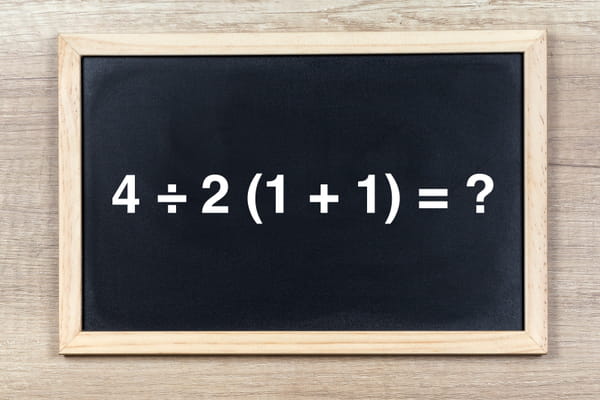So, are you ready to take up this mathematical challenge? Let’s see if you can solve this equation! Will you be able to get the answer you’ve been looking for? It’s up to you !
Prepare to dive into an equation that has sown confusion and sparked heated debates. We are faced with a seemingly simple mathematical problem, but one that has managed to confuse even the most seasoned among us. Can you solve this mathematical equation? The equation is:
Do not be fooled by its apparent simplicity, because this equation hides a sneaky trap that has made many Internet users doubt. Although accessible to college students, it managed to divide opinions and generate divergent results. Now it’s up to you to take up the challenge! Put your math skills to the test and see if you can crack the mystery of this equation. Get ready to exercise your logical mind, be analytical, and uncover the truth behind this seemingly mundane riddle.
What result did you get? One, two, or four? Some Internet users may have found other results, but you will have understood that the correct answer is hidden among these results. So, have you found the right one?
Let’s unravel the threads of this intriguing equation together! To solve the equation 4 ÷ 2 x (1 + 1), we follow the rules of precedence of mathematical operations, which means that we first perform the operations in parentheses, then the multiplications and divisions from left to right. Let’s start with the expression in parentheses (1+1), which equals 2. The equation then becomes 4 ÷ 2 x 2. Next, we perform the multiplication 2 x 2, which gives 4. The equation reduces to present at 4 ÷ 4. Finally, we perform the division 4 ÷ 4, and the result is 1. Thus, the result of the equation 4 ÷ 2 x (1 + 1) is 1.
Congratulations to all those who managed to find the right result. You have not forgotten the “operating priorities”, rules which are revised throughout the course of college students. To remember this order, here’s a little extra tip. The order of precedence of operations is also called PEMDAS to keep them in order: parenthesis, exponent, multiplication, division, addition and subtraction.


